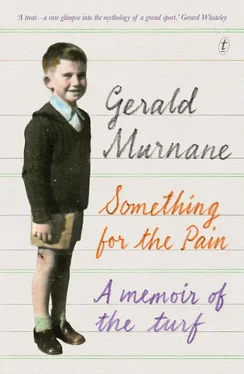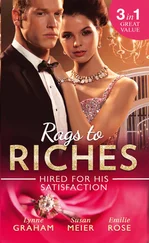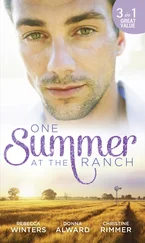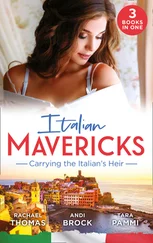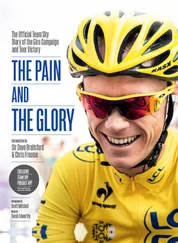I don’t recall having seen the name Guerin in any context since I read it on the label of the bottle nearly seventy years ago. (After I had written that statement, I looked into a Melbourne phone directory from ten years ago and found about forty subscribers with that surname!) When I was first taken to the art gallery, as we called it when it was housed long ago in part of the building now given over to the State Library, I saw the words Felton Bequest displayed beside many a painting, although I did not learn until many years later that one of the family of the bottlers of patent medicines had left an immense sum to the gallery. If I had read the business pages or the society pages of newspapers when I was young, I would surely have seen the name Grimwade from time to time. I was never a reader of those pages, and yet, when I first saw the name in a race book in the late 1950s, I had somehow learned that bearers of that uncommon name were likely to be company directors from Toorak or nearby suburbs and direct or indirect beneficiaries of a fortune mostly accumulated during the nineteenth century.
I know few facts about Mr P. S. Grimwade, but I recall the day when I first backed one of his racehorses. It was early spring in 1957, and racing was at Moonee Valley. A few days before the Moonee Valley meeting, I had heard from Martin Dillon, my colleague at the Royal Mint, that a horse named Sanvo (colours will be provided later) was surely being set to win a city race at long odds. Martin had noticed Sanvo at several recent country meetings. The three-years-old had been at comparatively short odds but had run poorly and had been dead in the sense of the word that Martin and I understood.
This is the place for me to report about Martin the belief or doctrine of his that most earned my admiration. My father, Teddy Ettershank, and most other punters that I knew or knew of reserved their biggest bets for favourites or horses at short odds. If they backed a horse at long odds, which they did only rarely, they outlaid only a fraction of what they would have bet if the horse had been at short odds. Martin Dillon was fond of saying that if he fancied a horse at long odds he would put much more on the horse than his usual stake. Martin liked to appear a man of quirks and eccentricities, but his fondness for long odds was genuine. I was with him in the paddock enclosure at Caulfield on Memsie Stakes Day in 1957 when a man with stable information told him that Gay Saba (Black-and-white stripes, red sash, sleeves and cap) was going to be well backed to win a sprint race.
Gay Saba was a middle-distance horse returning from a spell, and I was reluctant to back him, but Martin Dillon had fifteen pounds on the horse at twenty-to-one, after which I had my own modest bet. Martin even coupled Gay Saba in doubles with the favoured few horses in the race following. Gay Saba duly won, as did one of the favourites in the later race. I won modestly and Martin collected the equivalent of about twenty thousand dollars in today’s currency. His colleagues had often told me of Martin’s achievement with the horse Lucky Stride (Brown-and-white quarters) in the Oakleigh Plate of 1956, which was the year before I went to work at the Mint. Lucky Stride, which came from New South Wales, had finished only midfield in the previous Oakleigh Plate, in 1955, but Martin maintained that it might have won if it had not been badly checked in the straight. Before the 1956 Plate, he told anyone who would listen that the horse would win and that he was going to have twenty pounds on it. Lucky Stride won, and Martin got forty-to-one for his money.
When Martin had first told me about Sanvo’s being set for a city race, he was hoping to back it at twenty-to-one or more, but no more than ten-to-one was bet against it at Moonee Valley. Martin and I were in different enclosures that day, but he told me later that he’d had a big bet on the horse. For once, I had a big bet myself, according to my own scale of betting. Everything that Martin had predicted proved accurate, except that the horse dead-heated for first and we collected only half our anticipated winnings.
That was the day when I first had the opportunity to study the Grimwade racing colours and to infer from them that the man they represented was thoughtful, discriminating, and with a preference for the uncommon and the subtle. The colours seemed simple at first sight: Green-and-white hoops, blue cap. Unlike most sets of colours, however, which I took in at a glance, these provoked me to ponder on them; to call them up again and again in my mind; to try to analyse their effect on me. Green and white was by no means an uncommon combination in Victoria in the 1950s. The Steele family, who had made their fortune from retailing furniture, had the colours Green, white sash, sleeves and cap. The Silk brothers, wealthy wholesale merchants of fruit and vegetables and owners of the champion Carbon Copy, had the colours Green, white band and armbands. Green and white had a certain amount of attraction for me, but these colours with a blue cap was something else again. That blue cap was no mere detail but spoke eloquently of its owner’s taste for the unexpected and the unlikely. This might become clearer if I compare the Grimwade colours with a set that appeared often in New South Wales at the time. These were the colours of Sir Frank Packer, whose business was newspapers. Sir Frank’s horses carried Green-and-white hoops with a red cap. The effect on me of those colours is wholly different from the effect of the green and the white and the blue. The red cap seems predictable, even crass, and the work of someone with a preference for making points by shouting rather than by persuasion. The blue cap, on the other hand — and it was a bright azure or sky shade of blue, rather than a dark shade that might have stood out more boldly against the green and white — seems to have been added not as a mere detail but as part of a pattern, and not to dazzle us but to invite us to look beneath the surface.
Surely I didn’t derive all this from my first sight of Sanvo’s colours? Probably not, but I was certainly much taken by them, especially when the owner of the colours and the horse had revealed himself as someone of immense patience and not a little cunning: someone who might have won several country races with his capable horse but who chose instead to have the horse run unplaced for month after month in the country so that he, the owner, might back it at outsider’s odds in one daring attempt at a city race. On the day of Sanvo’s dead heat at Moonee Valley, I began to assemble the first of the details that together comprise what might be called the legend of P. S. Grimwade.
All these things took place nearly sixty years ago, and I can’t be sure today of their exact sequence. I’ll finish this section by reporting, as they occur to me, my few memories of the career of my legendary figure.
I don’t recall Sanvo’s winning again during the year after his dead heat. What I next recall is my being at Caulfield on a certain Saturday in September 1958. In those days, two meetings were held at Caulfield in close succession: the first on the Saturday before the Royal Show Holiday and the second on the Thursday of the holiday itself. I was at Caulfield on the Saturday with Uncle Louis, and Sanvo was a fifty-to-one outsider in a field of good city-class horses. I explained to Louis my interest in the horse and its owner. Louis was one of the few persons who shared my interest in such matters, and we each had a small bet on Sanvo. The green and the blue and the white were obscured in the ruck throughout the race; Sanvo finished near the rear. Five days later, on the Show Day public holiday, I was alone at Caulfield. Louis had gone back to Warrnambool. Sanvo was engaged again. This time, the field was even stronger, and he was a rank outsider at a hundred-to-one. It was unusual for any horse to race twice in such a short time, and I should have been suspicious, but I had felt angry and humiliated in front of Louis five days before, after I had spruiked Sanvo to him and the horse had done nothing. I was in no mood to be enthused by Sanvo’s chances. I had my standard bet on one of the favoured horses and ten shillings, win-only, on Sanvo on the tote. The field, as I reported, was stronger than the earlier field, but Sanvo seemed to be a completely different horse. He raced with the leaders throughout and fought out the finish with two others. The three passed the post with only a neck between them. The result, as it happened, was a dead heat, but this time Sanvo was not involved. Two very capable horses of those days were equal first: Droll Prince (Orange, white sleeves, red armbands and cap) and Brocken (White, ruby sleeves). A neck behind them, in third place, was Sanvo. According to the Sporting Globe of the following week, Sanvo’s betting fluctuations on the Thursday had been fifties to a hundred and back to sixty-sixes. This told me that someone, or more than one, had gone along the rails late in the betting and had backed Sanvo to win a great deal of money for very little outlay. The bets had been lost, but not by much and, far from bemoaning the loss of my own piddling sum, I was ashamed not to have put much more on the horse so that I could have felt a solidarity with P. S. Grimwade in his misfortune.
Читать дальше
